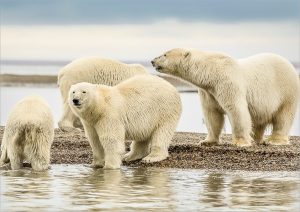The avian flu, which has taken a toll on millions of poultry and thousands of wild birds in the US, has now claimed the life of a polar bear for the first time on record.
The Alaska polar bear population is already deemed threatened, and experts express concern that this new threat could further challenge the species’ survival.
The infected polar bear succumbed to avian flu in the fall, with the cause of death confirmed on Dec. 6 by Alaska’s Division of Environmental Health.
Prior instances involved the avian flu causing fatalities in red foxes, a black bear, and a brown bear in Alaska, as reported in a June 2023 state document.
Alaska Records First-Ever Polar Bear Death Due to Avian Influenza

Alaska recently reported the first documented case of a polar bear succumbing to highly pathogenic avian influenza (HPAI).
The state’s Division of Environmental Health verified the incident in December, having discovered the carcass in Utqiagvik in October.
Experts posit that the bear contracted the virus while scavenging on infected birds.
While it is likely that other polar bears have been infected, the outcome may vary based on individual health.
This occurrence, although not unprecedented in black and brown bears, is particularly concerning for polar bears, an already vulnerable species due to habitat loss.
Ambiguity Persists on the Role of Birds in Polar Bear Diets
Presently, the extent to which polar bears depend on birds for sustenance and the potential number of infected polar bears remain uncertain.
However, Douglas Clark, an associate environmental professor at the University of Saskatchewan, noted that it is “absolutely typical” for polar bears to consume both live and deceased birds.
He further stated that reliance on this food source “appears to be increasing in multiple portions of the Arctic as it warms.”
Keeping tabs on the virus in polar bears proves challenging due to their remote habitat. While experts suggest a low risk of bear-to-bear transmission, concerns arise for specific subpopulations.
Diminished sea ice forces polar bears to rely more on seabirds for sustenance, raising worries about increased virus exposure.
